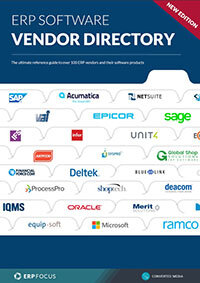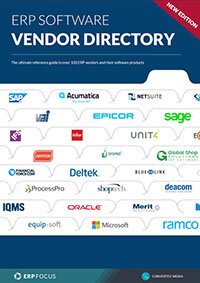Three benefits of ERP and e-commerce integration
As a rule, most enterprise folks tend to separate e-commerce and ERP platforms on the basis of discrete operational values. In the former case, ‘e-commerce’ is largely validated on the basis of front-office values, such as the ready execution of necessary transactions, and sales support oriented to various marketing activities. However, when considering the efficacy of ERP platforms, most of a business mill’s grist lies in the back-office, where inventory, distribution, HR, and affiliated processes reside.
While any of these advantages can be applied on the basis of stand-alone operations, in order to engender maximum revenue value, the best commercial course is usually to integrate e-commerce and ERP platforms; thereby nurturing the golden goose rather than limiting its ability to eat. In this event there are numerous ways to garner benefits - here are three of the more important value-sets to help get you started.
1. Elimination of data redundancy
Success in today’s market is driven by real-time tenets, which largely base themselves on the manipulation of common data elements, driven along by seamless and error-free processes. However, in the case of a stand-alone e-commerce, versus ERP structure, the seller is at a significant disadvantage, since the movement of common front to back-office data can only occur after jumping through multiple process iterations, simply to get the same element from one place to the other.
Find ERP suited to your e-commerce company with our free online ERP comparison tool
In the case of an e-commerce ERP integration however, this logjam is largely eliminated since today’s system melds typically harbor necessary technical hooks that allow a sales enterprise to ‘do it everywhere – all the time.’ For example:
- Buyer information can be trapped only once, and assuming that a further sale should occur, the buyer’s information can be immediately retrieved and delivered again without effort.
- However, if an additional sale has not appeared within a particular time-frame, the same information can be retrieved by the sales enterprise, which can, then, apply to various go-forward marketing efforts.
- In the same way that buyer information is trapped and re-used, sales rep information can be entered once by HR, and then re-applied accordingly in the event of commission analytics, or sales quota metrics.
2. Inventory streamlining
In this case, e-commerce ERP integration allows for direct synchronization and streamlining of the product management loop between main warehouse, to distribution hub, to final point of sale in real-time. This means that previously constant and tedious efforts of maintaining stock inventories throughout an enterprise supply chain can be optimized. This allows downstream cost accounting controls to be maintained throughout, while also enhancing ROI.
3. Enhanced revenue growth recognition
In the former case, the value of more efficient inventory management accrued to more regular or periodic operations. However, when it comes to executing quarterly, and/or annual revenue valuations, a direct integration between ecommerce and ERP platforms pay enormous dividends for several reasons. For example:
- Total daily/monthly receipts can be rolled up in real-time, thereby creating a better understanding of revenue business intelligence
- Quarterly revenue/cost variances can be better managed and ultimately delivered on-demand
- Annual revenue/cost variances can likewise tabulated and better managed revenue operations throughout the enterprise
These are just three of the advantages offered by integrating ecommerce and ERP platforms, and there are hosts of other upside impacts to be had, once you get your front and back platforms talking to each actively, and within the same business continuum, at the same time.
Free white paper

ERP Software Vendor Directory
Put the most comprehensive ERP vendor directory on your desk today

Related articles
-

Nine signs you need an eCommerce ERP integration
A guest blog from Brightpearl discussing eCommerce ERP and integration
-

Secret KPI: Why Your ERP Implementation Team Matters More Than Software
Learn how Godlan ensures successful ERP implementation for manufacturers with proven strategies &...
-

A beginner’s guide to ERP integration
What is ERP integration, why it matters, and more!

